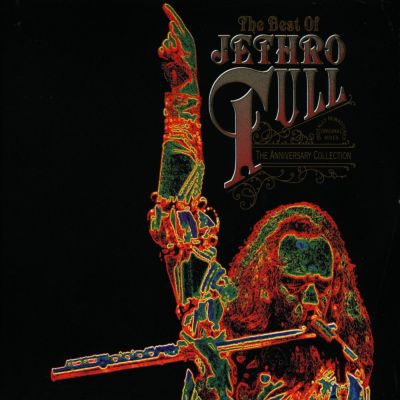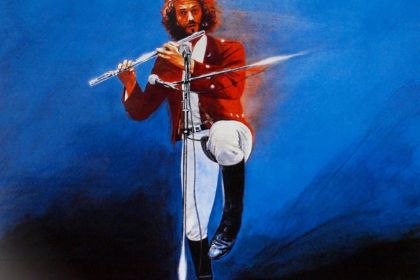SONGWRITER
Bungle in the Jungle: early prog-rock hit vs the greatest boxing match

Jethro Tull's The Anniversary Collection CD cover
Bungle in the Jungle is the best-known track from the critically derided War Child album released by the English prog-rock band Jethro Tull in 1974. In hindsight, the release would prove to be more influential than the contemporaries had given it credit for. At the time, the main points of contention were the band's return to a shorter song format as well as the lack of thematic conceptuality throughout the LP.
Although Bungle in the Jungle held a relatively high spot on the American charts for a long time, the band's songwriter Ian Anderson would later express his feeling on the track, deeming it trivial and too deliberate due to its radio-friendly cut.
The Bungle in the Jungle lyrics describes the animal inhabitants of the jungle, endowing them with character traits, motivations, and a way of life similar to those of human society. The narrative sparked speculation that the lyrics were referencing The Rumble in the Jungle—the first-ever boxing event to take place on the African continent when in 1974 Muhammad Ali defeated the reigning world heavyweight champion, George Foreman, by a knockout.
The fact that the song's release and the boxing match happened in the same month could be taken as indirect proof of this theory, but Ian Anderson has recalled that he conceived both lyrics and melody a year prior to the match while working on the abandoned Chateau D'Isaster Tapes. He speculates that the match title might have been inspired by the song given the track's heavy air circulation.
Listen to Bungle in the Jungle (2002 Remaster) by Jethro Tull:
Compositionally, the verse sections follow the tonal theory by combining the Aeolian mode with its common variation based on the harmonic minor scale. In the harmonic analysis of the verses' chord chains, the scale degrees (denoted with Roman numerals) show the following progressions in the key of B minor:
- Bm–Em–F♯7 or i–iv–V7;
- F♯–A–Bm–A or V–VII–i–VII.
Marked in blue, the F♯ and F♯7 major chords rooted in the fifth degree of the harmonic minor scale are not part of the B Aeolian mode since it would've contained the Fm minor dominant triad.
The B–G–A–D–G–A–B progression of the four major triads appearing in the Bungle in the Jungle choruses does not belong to any of the diatonic modes and generally cannot be explained by tonal theory.
Discover more songs composed in Aeolian minor mode and their harmonic analyses in the following articles:
- 8 songs to introduce Aeolian mode and natural minor scale
- 6 songs combining harmonic minor and Aeolian mode
- I Shot the Sheriff: Burnin' spliff nearly destroyed Bob Marley's original recording
- Locomotive Breath: fine groove born from Jethro Tull's studio session
- Shaman's Blues: quintessential The Doors song refined their most controversial album
- Hypnotized: Fleetwood Mac's song about aliens
- Mariposa Traicionera: meaning and flamenco roots of Maná's top hit
- Livin' la Vida Loca: why is Ricky Martin's best song so catchy?
- A Dios le Pido: Juanes' Spanish lyrics behind the song success
- El Farsante and 7 more songs by Ozuna in Dorian and Aeolian modes



